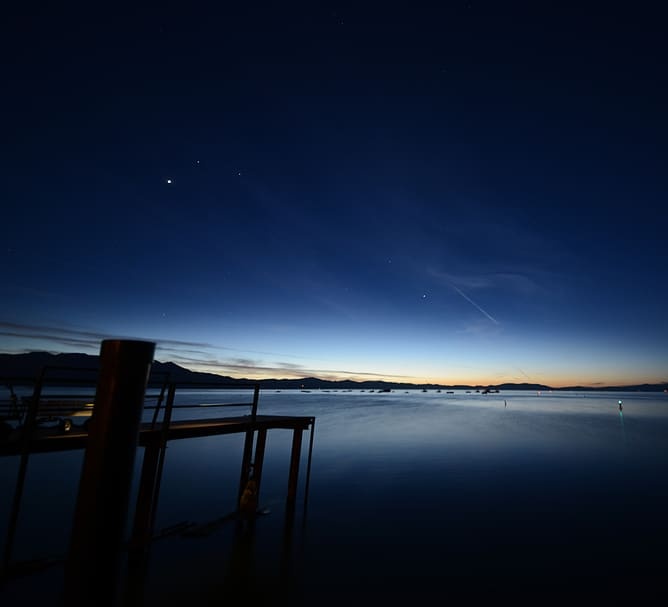Lake Tahoe is enjoying a third consecutive year reaching its maximum allowable water level, forcing climate activists to backtrack on alarmist water level claims.
When relatively low water levels were registered in 2015–16, climate activists claimed global warming was causing a “new normal” of persistent drought and low water levels. Yet abundant precipitation and high-water levels show climate activists cried “crisis” too soon.
Lake Tahoe’s high-water levels are merely one beneficiary of abundant precipitation and water availability. The January 2 issue of the [JH1] reported California’s water reservoirs are at record levels, with the most stored water in California history. The picture “could hardly be any rosier,” reported the Register. For example, water in Shasta Lake, which is the largest reservoir in California, is currently 117 percent of normal.
The chart below, published by the U.S. Geological Survey, shows Lake Tahoe water levels reaching their maximum limit three years in a row.

- 9.0 feet above gage level is the highest level legally allowed in Lake Tahoe.
- Lake Tahoe has reached 9.0 feet above gage level for three years in a row.
- Climate activists are facing major embarrassment after claiming the 2015-16 drought represented the dawn of a “new normal” of low water levels caused by global warming.
The news is particularly embarrassing for climate activists like Pacific Institute president emeritus Peter Gleick, who was extensively quoted in a 2018 Reno Gazette Journal article claiming global warming may be causing a “new normal” of drought and low lake levels.
“Gleick said that due to climate change, winter conditions once considered warmer and less snowy than average for the 20th century have become the norm for the 21st,” the Gazette Journal reported.
Gleick warned that water managers were not keeping up with climate change and less water availability.
“With a few exceptions, the warnings that climate change was going to change California’s water have been ignored,” Gleick told the Gazette Journal.
When the Lake Tahoe water level reaches its maximum allowable limit of 9 feet above gage height, or 6,229.1 feet above sea level, water managers must release additional water into the Truckee River to keep the lake from rising too high. The prospect of Truckee River releases is becoming a yearly conversation. The big complaint now is narrower Lake Tahoe beaches caused by high water levels.
“There were big beaches at lower water levels,” said Lake Tahoe Deputy Water Master Dave Wathen, according to the San Fransicsco news site, SFist. “Sand Harbor Beach near Incline Village is a very big beach. A lot of people could fit on it. Now, it’s tighter. It’s drastically different.”
The beach may indeed be “different,” but it certainly isn’t a crisis of minimal precipitation and low water levels, as climate activists recently claimed.
Tiffany Taylor ([email protected]) is a policy analyst at The Heartland Institute.





